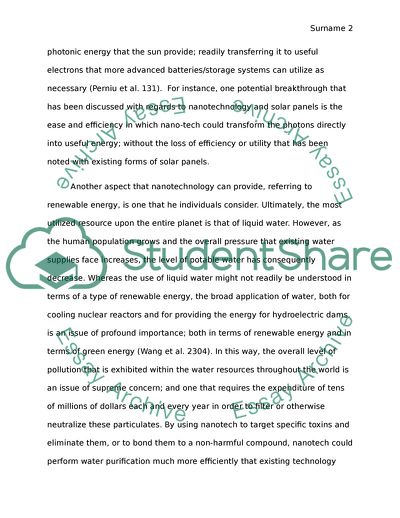Cite this document
(Nanotechnology and Implications for Renewable Energy Essay Example | Topics and Well Written Essays - 1250 words, n.d.)
Nanotechnology and Implications for Renewable Energy Essay Example | Topics and Well Written Essays - 1250 words. https://studentshare.org/technology/1810470-literature-survey-sustainable-energy-applications
Nanotechnology and Implications for Renewable Energy Essay Example | Topics and Well Written Essays - 1250 words. https://studentshare.org/technology/1810470-literature-survey-sustainable-energy-applications
(Nanotechnology and Implications for Renewable Energy Essay Example | Topics and Well Written Essays - 1250 Words)
Nanotechnology and Implications for Renewable Energy Essay Example | Topics and Well Written Essays - 1250 Words. https://studentshare.org/technology/1810470-literature-survey-sustainable-energy-applications.
Nanotechnology and Implications for Renewable Energy Essay Example | Topics and Well Written Essays - 1250 Words. https://studentshare.org/technology/1810470-literature-survey-sustainable-energy-applications.
“Nanotechnology and Implications for Renewable Energy Essay Example | Topics and Well Written Essays - 1250 Words”. https://studentshare.org/technology/1810470-literature-survey-sustainable-energy-applications.


